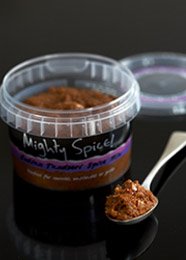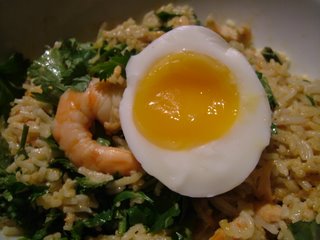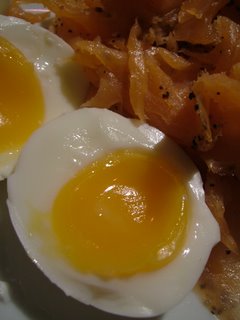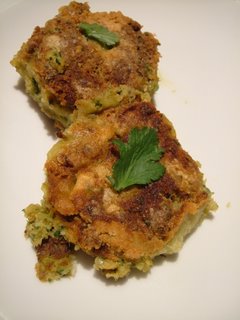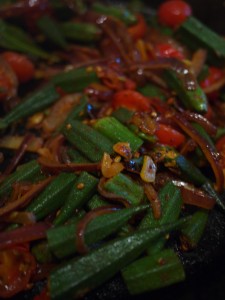
I’ve got collection of bad habits which do nothing to endear me to my local Indian takeaway. If we’re having takeout, I usually cook our own rice, occasionally heat up some oil for DIY poppadoms, and then fail miserably to order anything other than vegetable dishes, which happen to be the least expensive thing on the menu. This doesn’t all come from being a hideous cheapskate; it’s just that I like my own pilau rice better than the stuff with the red and green food colouring in it, and have had a preference for vegetable curries ever since I got food poisoning in India in 2005. (A tip: if you’re in a city where the sewers drain directly into the sea, don’t eat the prawns.) And poppadoms are great fun to make at home, as you’ll know if you’ve ever tried.
Sadly for the local takeaway, I’ve started to take to making bhindi bahji, which is probably my all-time favourite curryhouse dish, at home too. There are a few reasons for creating this extra work for myself: home-made bhindi bahji is a lot less greasy than the restaurant kind, which always comes drowning in ghee for no reason that I can really make out, and I can control the cooking of the okra to make sure it doesn’t produce any of the snotty slime that puts so many people off the vegetable.
I love okra. I like its texture (I even like slippery, slimy okra, especially for its ability to thicken the base it’s cooked in), its flavour and the shuddery feeling I got aged about ten when my parents used to refer to it as “ladies’ fingers”. It’s a much maligned vegetable, and I’d encourage you to have a go at making this dish if the only okra you have experienced is olive green and exuding stuff that looks as if it came out of a snail. Cooked like this, it is crisp, fresh- tasting and entirely snot-free.
To serve two as one of two curries on the table, you’ll need:
150g fresh okra
12 fresh, sweet cherry tomatoes
1 medium red onion
2 cloves garlic
1 teaspoon black mustard seeds
1 teaspoon fennel seeds
1 teaspoon coriander seeds
1½ teaspoons turmeric powder
1 tablespoon ghee or groundnut oil
Chop the okra into pieces about an inch long (larger pieces mean less potential for slime) and dunk in a large bowl of water with a couple of spoons of salt dissolved in it. Drain in a colander. Halve the tomatoes and set aside, and chop the garlic.
Cut the onion in half, and slice it into half moons. Heat the ghee or groundnut oil to a high temperature in a frying pan or wok, and throw the onion in. Stir fry it for three minutes, then add all the spices and the garlic to the pan. Continue to stir fry until the onion is turning translucent (a couple of minutes) and the spices are giving off their fragrance.
Add the drained okra to the pan and keep stir-frying for one minute. Add the tomatoes, and continue to cook, stirring all the time, until the tomatoes start to collapse in on themselves and the okra is a bright green and piping hot. Taste for seasoning, and add some salt if necessary.
Serve immediately.



